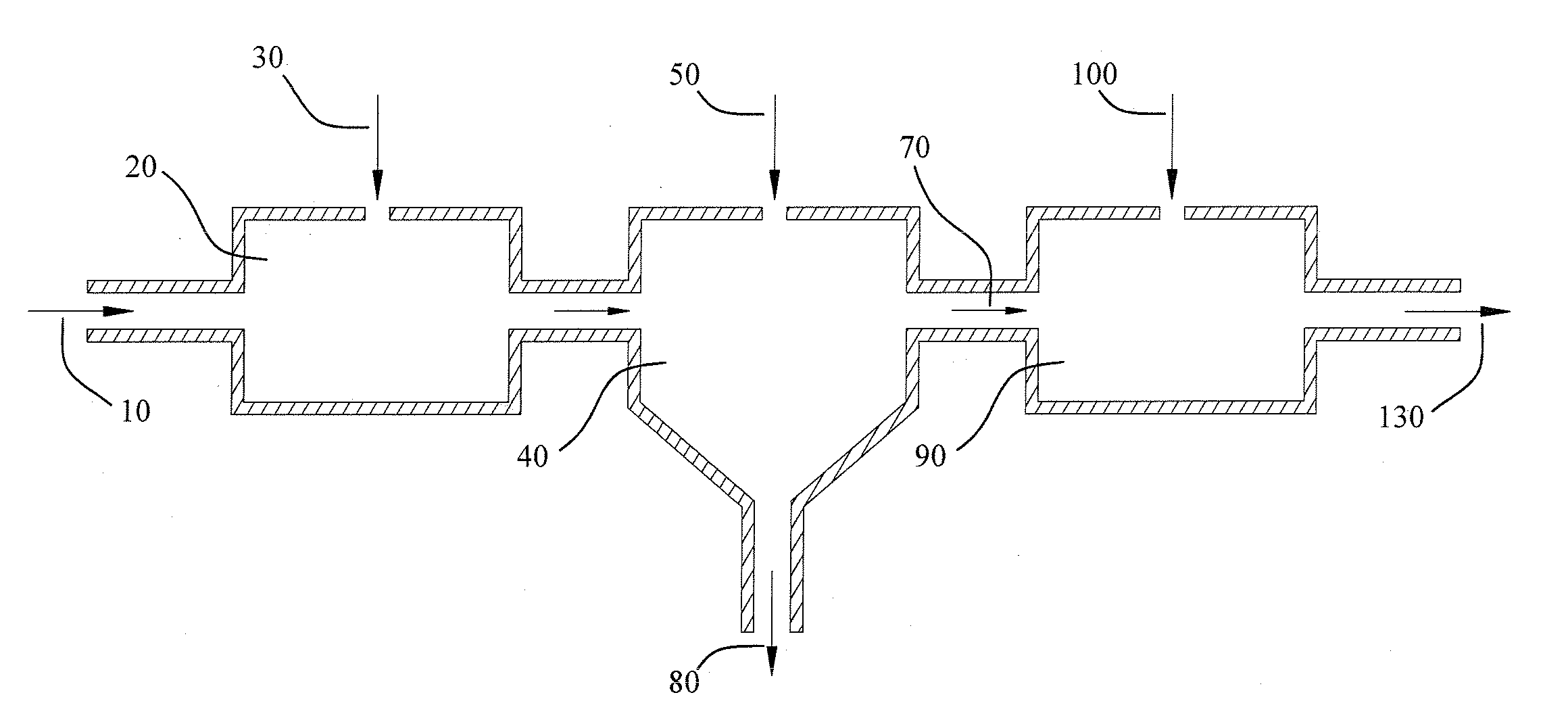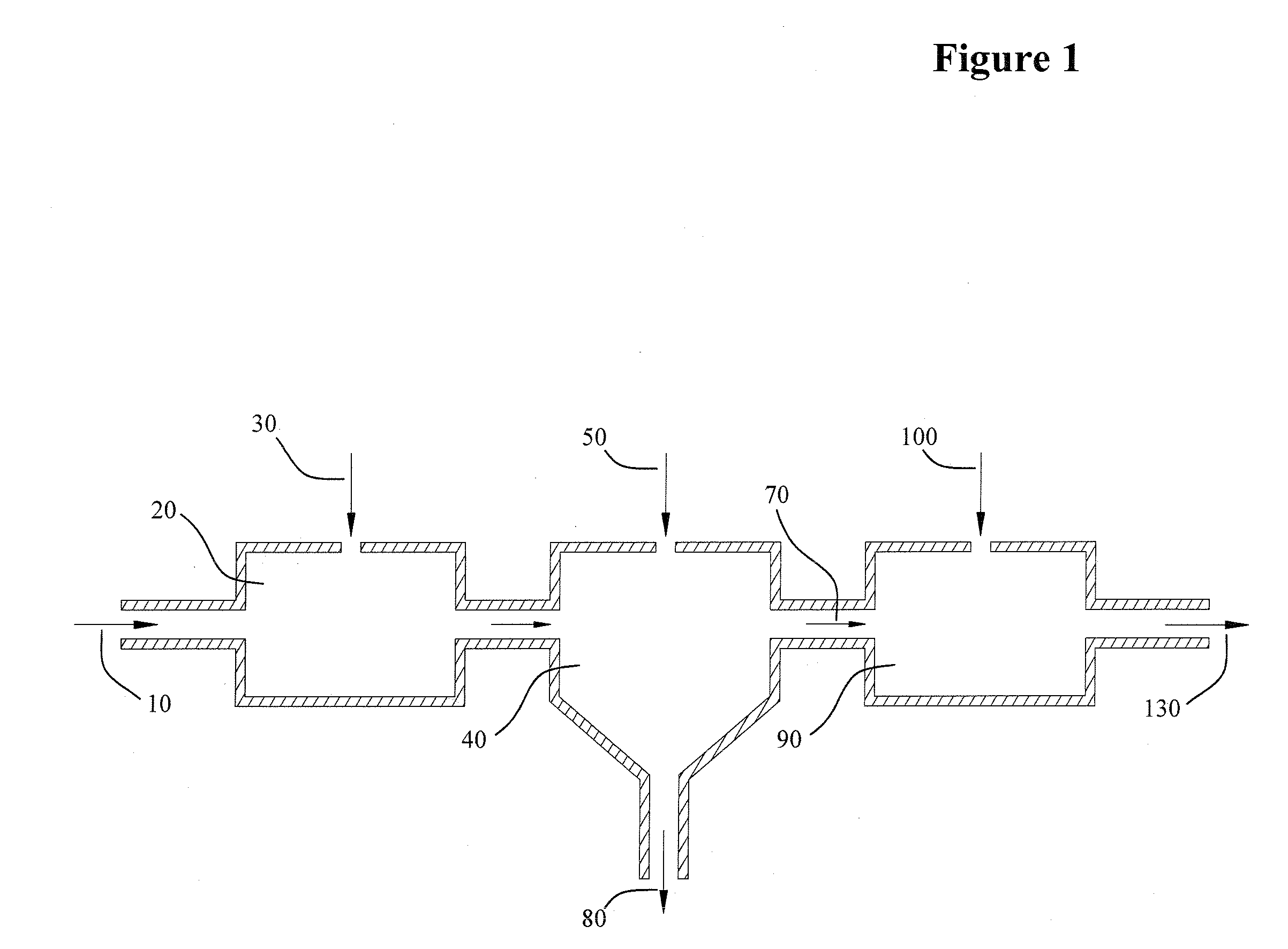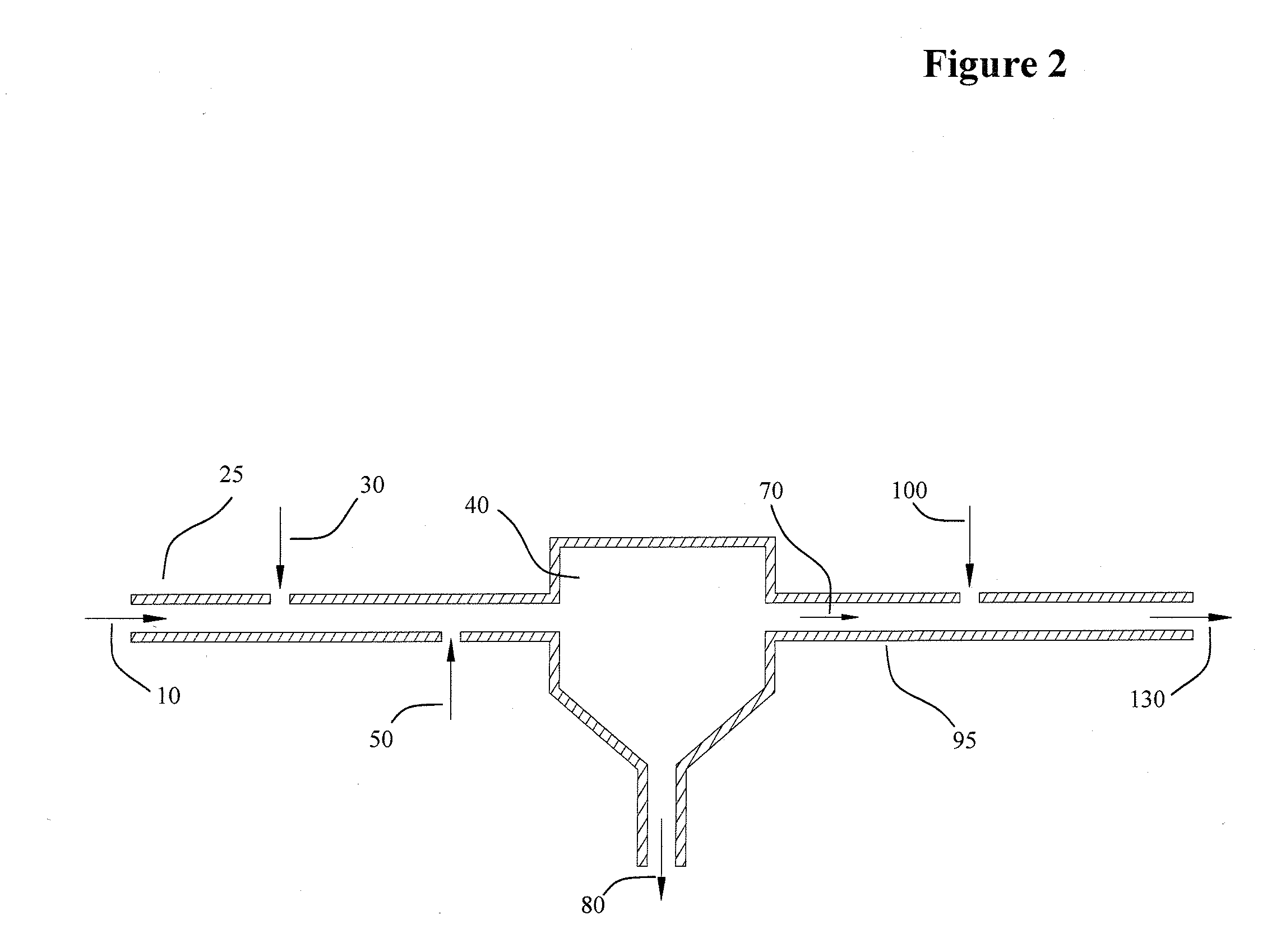Aqueous iron removal process and apparatus
a technology of iron removal and water, applied in the direction of filtration separation, other chemical processes, separation processes, etc., can solve the problems of iron contamination of water, high cost, and high labor intensity, and achieve the effect of minimal residual total iron conten
- Summary
- Abstract
- Description
- Claims
- Application Information
AI Technical Summary
Benefits of technology
Problems solved by technology
Method used
Image
Examples
Embodiment Construction
[0014]This invention relates to a chemical process wherein an iron entrained aqueous solution (brine) is treated with phosphoric acid to decrease the pH and convert the entrained iron into dissolved iron phosphate. The pH of the solution bearing the iron phosphate solute is then increased by the addition of a base, elevating the pH to a level at which the iron phosphate is insoluble and affording precipitation. The precipitate and high pH brine are separated and the brine buffered to a suitable pH as needed by process. Some of the advantages of the present invention over the prior art include:
[0015](a) The removal of iron is unimpeded by the presence of oils or hydrocarbons, conveying a distinct advantage over the prior art; auspiciously pertaining to iron removal from oil and gas production brines. In this application, the invention proffers the elimination of expensive and troublesome pretreatment equipment for removal of oils and hydrocarbons.
[0016](b) The invention employs a che...
PUM
| Property | Measurement | Unit |
|---|---|---|
| Acidity | aaaaa | aaaaa |
Abstract
Description
Claims
Application Information
 Login to View More
Login to View More - R&D
- Intellectual Property
- Life Sciences
- Materials
- Tech Scout
- Unparalleled Data Quality
- Higher Quality Content
- 60% Fewer Hallucinations
Browse by: Latest US Patents, China's latest patents, Technical Efficacy Thesaurus, Application Domain, Technology Topic, Popular Technical Reports.
© 2025 PatSnap. All rights reserved.Legal|Privacy policy|Modern Slavery Act Transparency Statement|Sitemap|About US| Contact US: help@patsnap.com



